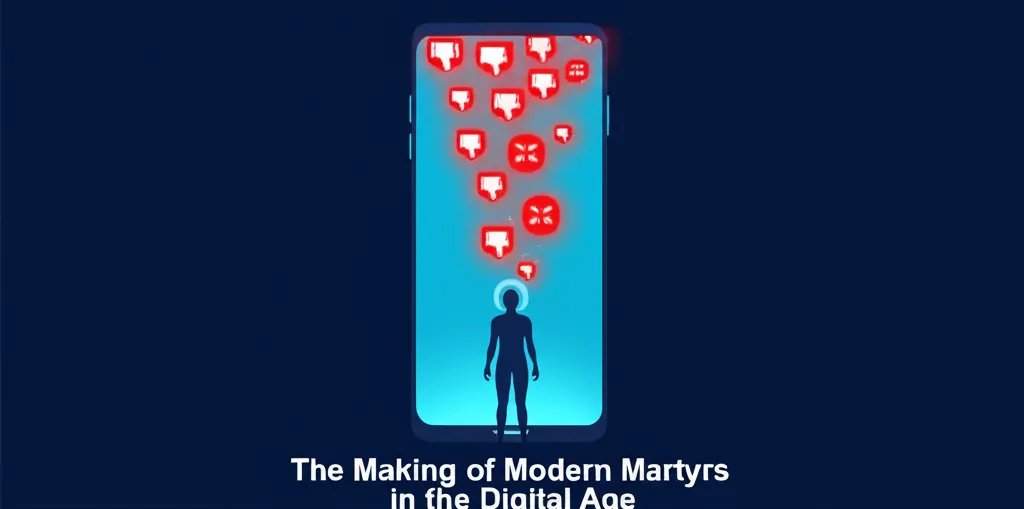Developer Offer
Try ImaginePro API with 50 Free Credits
Build and ship AI-powered visuals with Midjourney, Flux, and more — free credits refresh every month.
Is Your Social Media Feed Even Real Anymore
The Unsettling Realism of AI on Social Media
During a recent doom-scroll on TikTok, I found myself doing the classic Facebook mom move: pinching and zooming on a photo. But I wasn't trying to decipher a blurry recipe; I was scrutinizing a Polaroid-style picture of a celebrity with a fan. After a long stare, it hit me: the photo wasn't real. It was generated by artificial intelligence.

This experience is no longer an anomaly. My social media feeds, and likely yours too, are now saturated with AI-created images. We see convincing selfies with celebrities, public announcements for relationships that don't exist, and fake candids that are nearly indistinguishable from reality. The unsettling part isn't just being fooled in the moment; it’s realizing we are living through a fundamental shift in how the internet and social media function.
Is the Internet Already Dead?
This phenomenon ties into what some call the Dead Internet Theory. This theory suggests that most of the content we see online is no longer created by humans but by bots, algorithms, and now, AI. The thousands of interactions on a post might just be automated bots creating the illusion of a vibrant online community. Whether or not you fully subscribe to this theory, its core sentiment feels increasingly true: the human touch on the internet seems to be fading away.
From Virtual Influencers to an Attention Economy
Back in 2016, the rise of Lil Miquela, a virtual influencer, felt captivating. Created by the software company Brud Inc., Miquela posted selfies, partnered with brands, and engaged in drama with other influencers, just like a real teenager. She was so convincing that TIME Magazine named her one of the “Most Influential People on the Internet” in 2018. At the time, she was a futuristic novelty. Today, as AI becomes exponentially smarter, she feels more like a prophecy.
What started as a quirky experiment has now become the standard. Our feeds are filled with digital personas and fabricated moments that blur reality far more effectively than Lil Miquela ever did. This shift highlights a deeper change in social media's purpose. These platforms were once about connecting people and sharing perspectives. Now, the priority has moved from connection to attention. It no longer matters if what you're seeing is real, as long as you're looking.
My TikTok For You Page has become a testament to this, filled with AI-generated Polaroids of fake relationships and celebrity encounters. The images are so authentic that I have to zoom in like a detective, hunting for the subtle giveaways of AI generation.
The New Era of Digital Deception
Of course, altering images online is nothing new. We've all seen Facetune mishaps and clumsy Photoshop edits. I'll admit, I've even made a few rough edits of myself into a photo with Harry Styles and experimented with AI tools to see what they could create. The critical difference now is the quality. AI-generated images are no longer just passable—they're nearly perfect. The tell-tale signs like a warped hand or a nonsensical logo are disappearing. These polished fakes make misinformation incredibly difficult to spot.

Consider this: we often joke about our parents being tricked by chain emails or online scams. But what happens when we're the ones aging into a future where our feeds are flooded with flawless, fake content? Imagine being 60 and receiving a message from what appears to be a real friend asking for money, or sharing a celebrity endorsement that was entirely fabricated. In a darkly ironic twist, the same technology that entertains us today is setting us up to be the next generation falling for digital deception.
A Gamble on Reality
The humor fades when you consider the implications. The rise of undetectable fake images undermines the core promise of social media. If these platforms were built to connect us with real people, what happens when a significant portion of what we see never actually existed? The internet begins to feel less like a global conversation and more like a sophisticated simulation.
Perhaps this is our generation's reality—navigating a digital world where fact and fabrication are constantly blurred. Or maybe it's a wake-up call. To preserve the connective power of social media, we must advocate for transparency, champion media literacy, and perhaps reconsider our collective obsession with virality.
Until then, you can find me zooming in on TikToks like a suspicious mom on Facebook. In this new digital age, trusting what you see online feels less like common sense and more like a high-stakes gamble.
Compare Plans & Pricing
Find the plan that matches your workload and unlock full access to ImaginePro.
| Plan | Price | Highlights |
|---|---|---|
| Standard | $8 / month |
|
| Premium | $20 / month |
|
Need custom terms? Talk to us to tailor credits, rate limits, or deployment options.
View All Pricing Details

